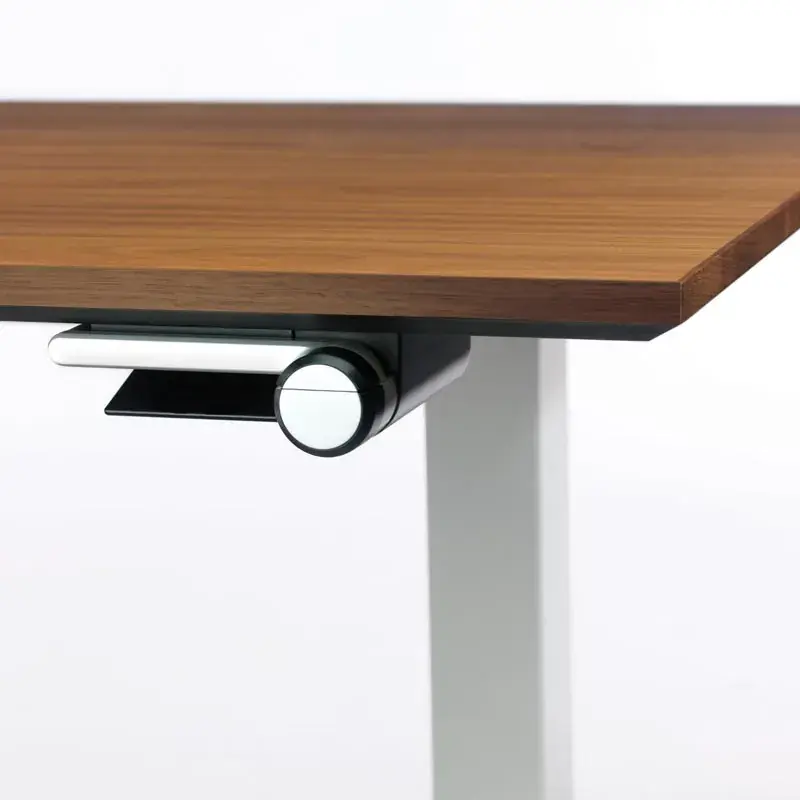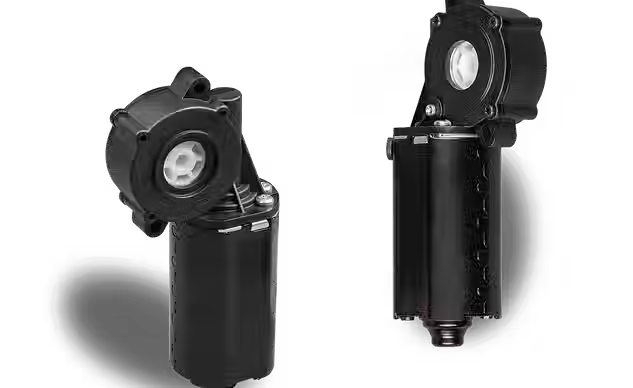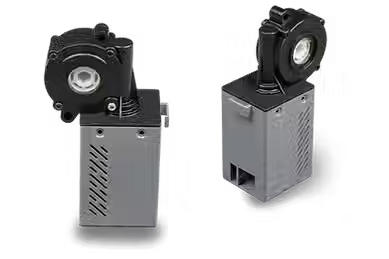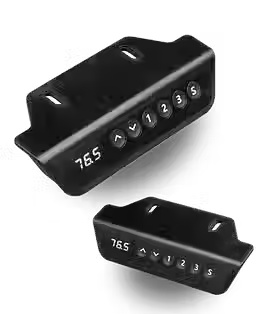Actuator Failure: Causes, Symptoms, And Solutions
- Xie
- Jul 28
- 7 min read
Understanding Actuator Malfunctions: Key Insights
Actuator failure can lead to significant disruptions in systems that rely on precise movement and control. Understanding the causes, symptoms, and solutions of actuator failure is crucial for maintaining operational efficiency. Faulty actuators can result from various factors, such as electrical issues, mechanical wear, or inadequate maintenance. Recognizing these symptoms early allows for timely intervention, reducing downtime and repair costs.

Common Causes of Actuator Failure
There are multiple factors contributing to actuator failure. Electrical malfunctions, such as short circuits or power surges, often lead to actuator breakdowns. Equally, mechanical issues like wear and tear on gears or joints affect the actuator's performance. Environmental conditions can also pose challenges, affecting the actuator through corrosion or exposure to extreme temperatures. Here's our homepage.
Symptoms to Watch For
Identifying actuator failure symptoms early can save time and resources. Common indicators include unusual noises during operation, erratic movements, or complete unresponsiveness. Other warning signs could involve fluctuating performance levels, heating of components, or failure to reach desired positions. Recognizing these symptoms quickly is vital for effective troubleshooting.
Electrical malfunctions
Mechanical wear
Environmental factors
Implementing routine checks and maintenance can greatly mitigate these risks, promoting longer actuator lifespans and enhanced performance.
Causes | Symptoms | Solutions |
Electrical Malfunctions | Unresponsive actuator | Regular electrical checks |
Mechanical Wear | Erratic movements | Scheduled maintenance |
Environmental Damage | Heating components | Protection measures |
Solutions for Actuator Issues
Addressing actuator failures involves understanding the underlying causes and implementing appropriate solutions. Regular inspections and preventative maintenance are essential steps to ensure optimal performance and longevity. Staying proactive minimizes downtime and enhances productivity across the board.
Identifying Symptoms of Actuator Issues
Understanding actuator failure is essential for maintaining the functionality of your machinery. It's crucial to identify the symptoms of actuator issues early on, as this can prevent costly repairs and downtime. Symptoms may include irregular movement, excessive noise, or complete lack of response from the actuator. Recognizing these actuator failure symptoms allows for timely intervention and can lead to effective solutions.
If you have any questions or are interested in our products, feel free to contact us

Common Symptoms to Watch For
Symptoms of actuator issues often show up during operation. If you notice any variations in actuator response or behavior, it is a sign that there could be deeper mechanical or electrical failures. Pay attention to unusual vibrations or inconsistent speeds, as these can indicate actuator failure. Documenting these irregularities can help diagnose the problem more effectively.
To meet the ultimate in efficiency and responsiveness in modern applications, many engineers and designers are turning to more specialized powertrains. If you're looking for a drive solution that combines speed and stability, the Speed-focused Motor is the ideal choice. It not only improves overall operating efficiency, but also demonstrates superior acceleration and precise control in mission-critical applications.
Diagnostic Solutions
When addressing symptoms of actuator failure, employing diagnostic tools can prove invaluable. Techniques such as ultrasonic testing and thermography can provide insights into potential malfunctions. Further, regular maintenance can prevent many issues before they escalate into significant repairs. This proactive approach serves as an effective solution to many actuator problems.
In many applications where high load capacity is required, high speed is not enough. A drive solution with strong torque output is the key, and the Torque -focused Motor is designed to cope with high loads and high resistance environments, and maintains a stable and strong power output at low speeds, which is widely used in industrial automation, heavy machinery, and lifting and lowering systems in the smart home.
Irregular movement
Excessive noise
Poor response time
Mechanical wear
Symptom | Possible Cause | Recommended Solution |
Irregular movement | Mechanical wear | Replace actuator components |
Excessive noise | Lubrication issues | Apply appropriate lubricant |
Final Thoughts
Monitoring actuator function can prevent unexpected failures and enhance machinery reliability. Recognizing the early symptoms enables finding effective solutions before they develop into complex issues. Regular assessments and prompt actions can maintain optimal performance.
Explore more insightful articles like this one – we have plenty more for you to discover here !
Regular maintenance checks
Keeping detailed records
“Early detection of actuator issues can save time and money in the long run.”
Common Causes Behind Actuator Failures
Actuator failures can significantly disrupt operations in various industries. Understanding the "Actuator Failure Causes Symptoms Solutions" is essential for effective troubleshooting and prevention. Several factors can contribute to the malfunction of actuators, which are critical components in automated systems. These issues may arise from mechanical wear, electrical problems, or even environmental conditions that the actuator is exposed to over time.

Mechanical Wear and Tear
One prominent cause of actuator failure is mechanical wear. Over time, actuators experience fatigue when subjected to repetitive motion and heavy loads. Inadequate maintenance or lubrication can exacerbate the wear process, leading to significant operational failures. Regular inspections can help catch these issues before they result in complete failure.
Electrical and Control System Issues
Another critical area is the electrical system. Problems such as incorrect voltage, short circuits, or faulty wiring can lead to actuator failures. Such issues may present symptoms like erratic movements or total inoperability, making it crucial to monitor the actuator's electrical connections routinely.
Mechanical failure due to prolonged use.
Electrical faults such as short circuits.
Environmental factors like extreme temperatures.
Identifying these causes can help implement effective solutions and minimize downtime.
Cause | Symptoms | Solutions |
Mechanical Wear | Reduced efficiency | Regular maintenance and lubrication |
Electrical Issues | Erratic movements | Inspect wiring and connections |
Environmental Damage | Increased failure rates | Use protective covers |
Preventative Measures
To avoid actuator failures, it's wise to adopt a proactive maintenance approach and conduct regular system checks. Maintaining a clean environment is equally important to shield actuators from potential damage.
Establish routine inspection schedules.
Implement a preventive maintenance plan.
Train personnel on actuator handling and care.
"Understanding actuator failure causes is the first step toward implementing effective solutions."
Effective Solutions for Actuator Problems
Actuator failure can lead to a halt in operations, causing significant issues in various industries. Understanding the actuator failure causes, symptoms, and solutions is crucial for maintaining operational efficiency. Common causes include electrical faults, mechanical wear, and environmental factors, which can lead to symptoms like unexpected stops, erratic movements, or complete failure of the actuator. These failures can disrupt production, so identifying and addressing them promptly is essential.

Common Symptoms of Actuator Failure
Recognizing the symptoms of actuator failure is vital for timely intervention. Symptoms may include increased noise, unusual vibrations, and failure to respond to control signals. Additionally, an actuator may show signs of overheating or potently exhibit erratic performance. Ignoring these symptoms can exacerbate issues, potentially leading to a complete breakdown, which can be costly and time-consuming to repair.
Diagnosing Actuator Issues
Diagnostics play a key role in resolving actuator issues. Start by evaluating power supply, inspecting for wear, and testing for proper signal transmission. Regular maintenance can often prevent major failures.
Check electrical connections.
Inspect mechanical components for wear.
Test control signals regularly.
Symptom | Possible Cause | Suggested Solution |
Erratic Motion | Electrical Fault | Check wiring and connections. |
Overheating | Mechanical Resistance | Lubricate moving parts. |
Long-term Solutions
For lasting solutions, invest in quality components and provide regular training for operators to recognize actuator issues promptly.
Conduct regular maintenance checks.
Invest in quality parts.
Train personnel on symptoms of failure.
Actuator problems can derail operations, but proactive measures can ensure smoother performance.
Explore more insightful articles like this one – we have plenty more for you to discover here!
Preventive Measures Against Actuator Failure
Understanding actuator failure causes, symptoms, and solutions is crucial for maintaining efficient equipment performance. Actuators play a significant role in various systems, and their failure can lead to costly downtime. By implementing preventive measures, you can mitigate risks associated with actuator failure.
Regular Maintenance
One of the most effective preventive strategies is conducting regular maintenance checks. Inspecting actuator components for wear and tear can help identify issues before they escalate into severe failures. Regular lubrications and adjustments contribute to the long-term functionality of actuators and minimize the risk of unexpected breakdowns.
Monitoring Performance
Employing performance monitoring systems can provide valuable data on actuator operations. Tracking parameters like temperature and pressure can highlight anomalies indicative of potential failures. By analyzing this data, maintenance teams can make informed decisions and apply solutions that prevent actuator failures before they occur.
Implement a rigorous maintenance schedule.
Use monitoring systems to track actuator performance.
Train staff on actuator troubleshooting.
Utilize quality components for replacements.
Adopting these strategies can greatly enhance the reliability of your systems. It helps in identifying actuator failure causes early, aiding in quick solutions.
Symptoms | Possible Causes | Solutions |
Unresponsive actuator | Power loss | Check power supply. |
Overheating | Incorrect lubrication | Apply proper lubrication. |
Odd noises | Mechanical wear | Inspect components. |
Training and Awareness
Ensuring that your team is well-informed on how to recognize symptoms of actuator failure can make a substantial difference. Regular training can equip staff with practical knowledge on best practices and preventive measures to take. This awareness promotes a proactive approach in your operations.
Conduct training sessions for staff.
Promote awareness of common failure symptoms.
Implementing these preventive measures can save significant costs associated with actuator failure.
FAQs on Actuator Failure: Your Questions Answered
Actuator failure can significantly disrupt operations, leading to costly downtime. Understanding the causes, symptoms, and solutions associated with actuator failure can help you manage equipment better. Common actuator failure causes include mechanical wear, electrical issues, and environmental factors. Symptoms often manifest as erratic motion, failure to initiate movement, or unusual noises. Identifying these symptoms early can prevent more extensive damage.
What Causes Actuator Failure?
The root causes of actuator failure can vary widely. Mechanical wear over time can lead to component breakdown, while faulty wiring or damaged circuits often results in electrical malfunction. Additionally, exposure to extreme environments may lead to premature actuator wear. Proper maintenance and monitoring can mitigate these risks significantly, ensuring smoother operations in the long run.
Common Symptoms to Look For
Actuator failure symptoms can often be misinterpreted. Sudden stops or unresponsive actions typically signal an issue. Other symptoms include abnormal temperatures, unexpected vibrations, or failure to reach designated positions. Keeping a vigilant eye on these indicators will allow for timely interventions, thus maximizing the actuator’s lifespan.
Erratic movement
Unusual noise
Inability to operate
Overheating
Addressing actuator failure quickly is essential. Below is a table highlighting key solutions.
Solution | Description |
Regular Maintenance | Conduct routine inspections and servicing. |
System Monitoring | Utilize sensors to track performance. |
Environmental Control | Ensure suitable conditions for operation. |
Effective Solutions for Actuator Issues
Implementing corrective actions can prevent future actuator failure. Such measures may include actively monitoring performance and instituting preventive maintenance protocols. This kind of proactive approach can dramatically reduce downtime.
Implementing diagnostics
Regularly updating system firmware
Conducting thorough training programs
Proactive measures not only enhance performance but also extend the lifespan of your actuators.






Comments